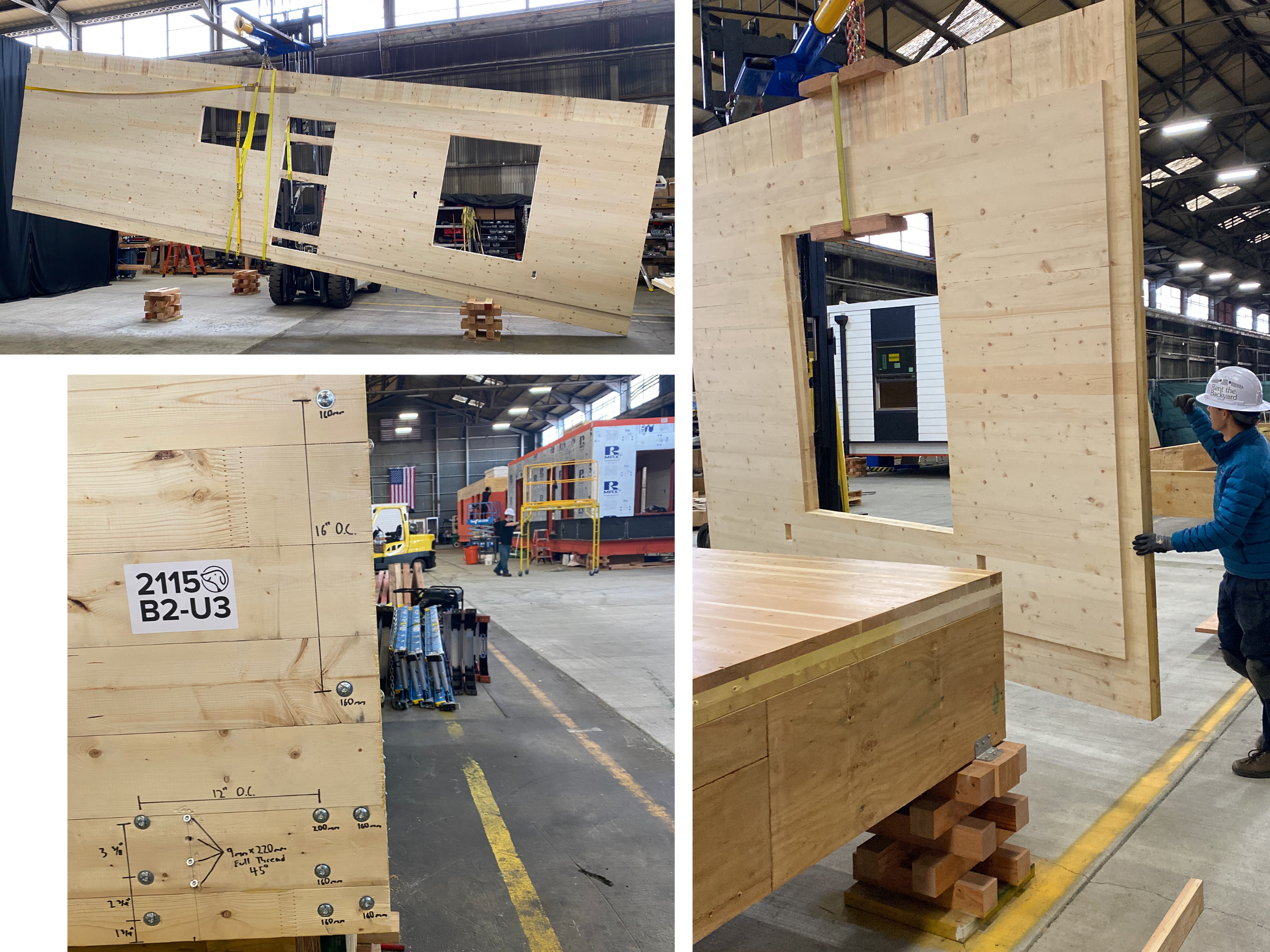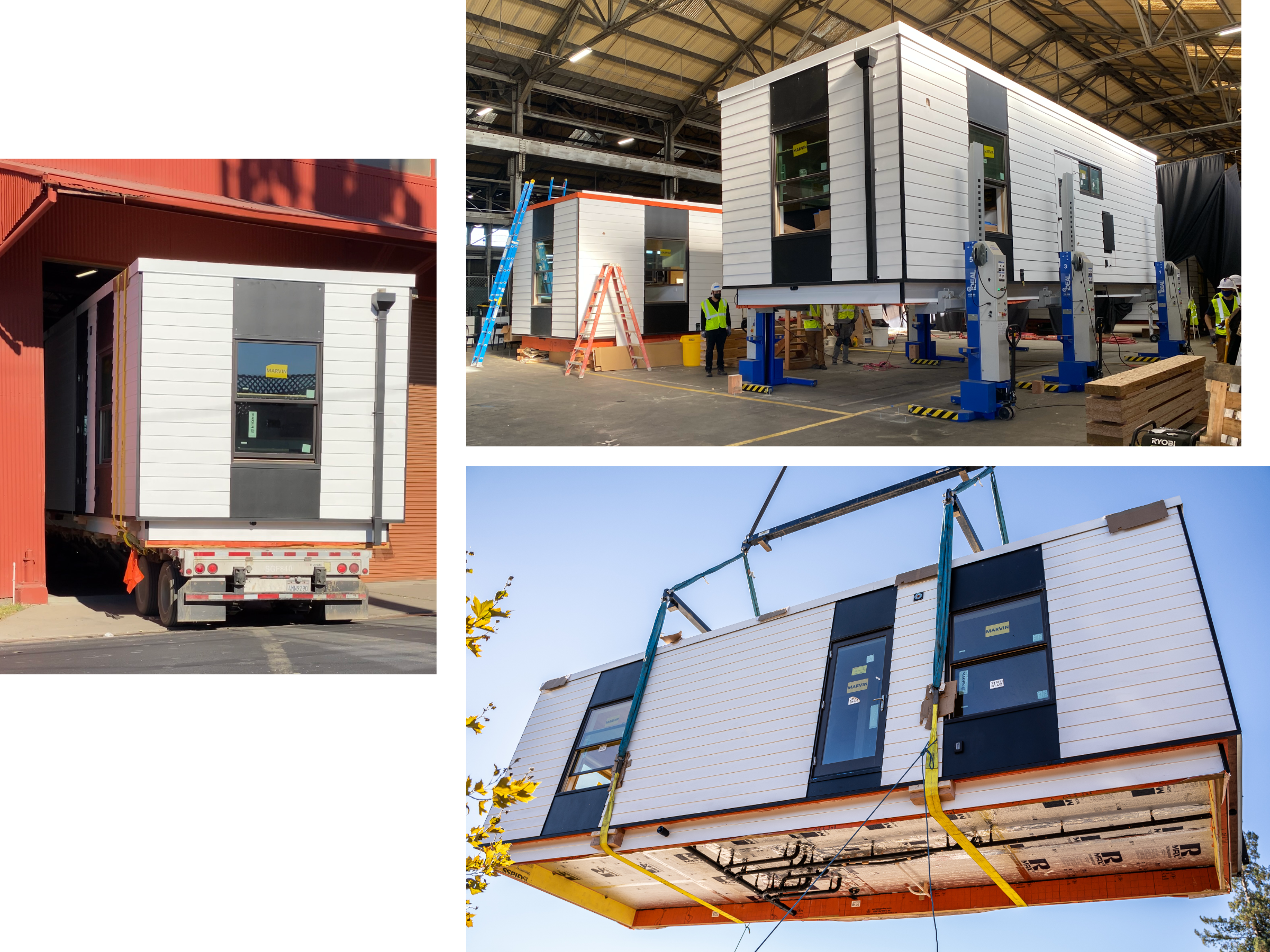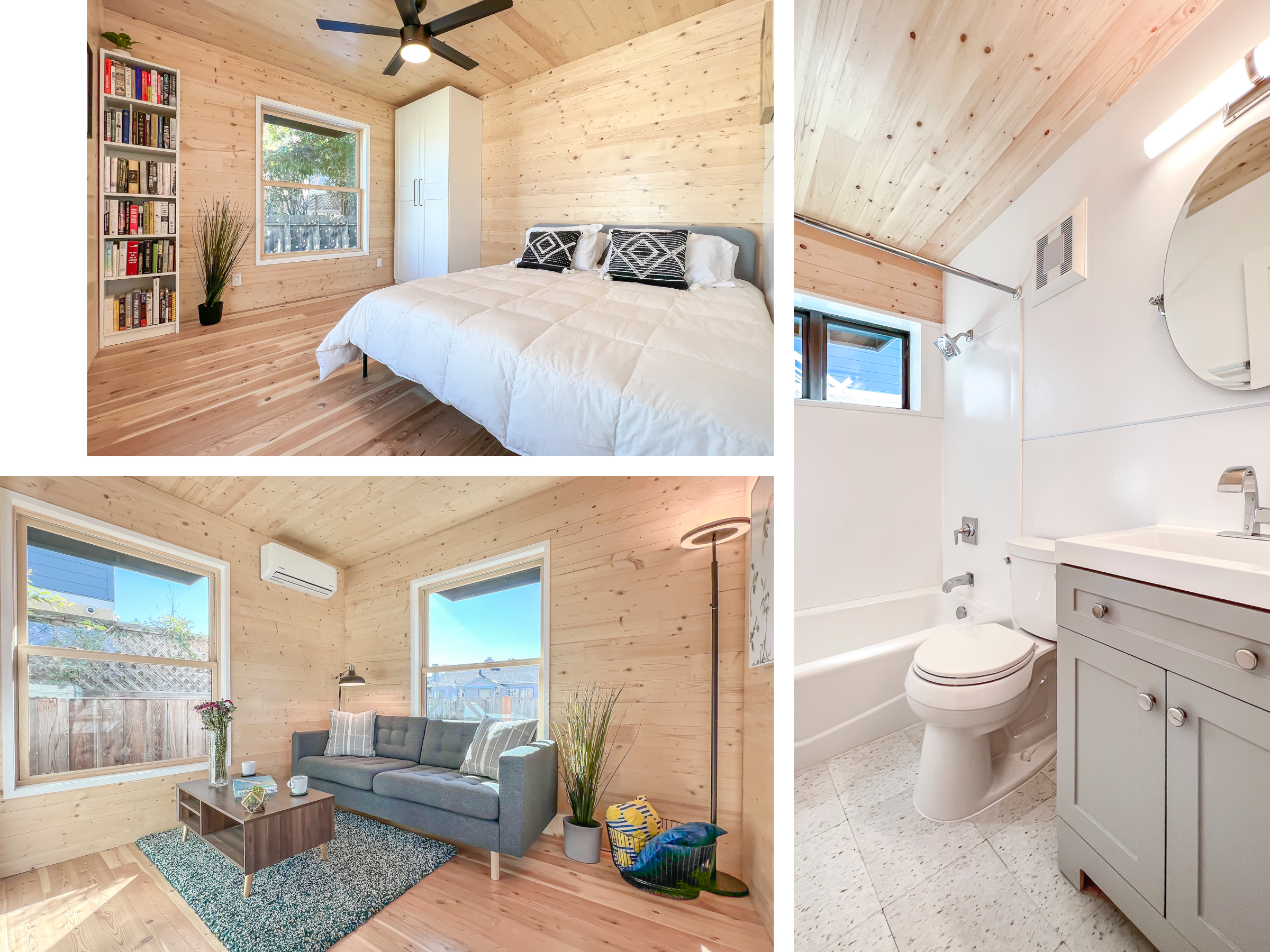What happened to Pippin / Rent the Backyard
21 Dec 2022In 2018 I co-founded Pippin, a housing factory startup, and our backyard home (ADU) brand Rent the Backyard. Our goal was to use California’s new ADU laws to build a lot of homes quickly by helping homeowners make the most of their unused land. After 4 years, 10 homes built, and a $10m+ contracted revenue annual run rate, we announced that we’re shutting down.
When I founded this startup, I thought my co-founder and the rest of our team could do anything. This carried us through all sorts of obstacles — finding the first few customers who trusted us to build them a new home, convincing our first few employees to leave stable work for a shot at greater impact, and opening our own factory to deliver those first homes.
Starting a company means you have to believe in yourself to the extent that you can solve any problem. This belief carries you through a lot of challenges — expected and unexpected. You fall, you learn, you grow, and you fix what you can. But sometimes, you can’t fix things fast enough to keep yourself alive.
I learned many difficult lessons from this startup, and shutting it down has been painful. I hope these reflections can help if you’re creating something similar.
Rent the Backyard was made up of me, my co-founder Brian, and many other people. This post is my perspective on what transpired with the business. I may refer to “we” or “our” in a company sense, but these are my personal reflections.
How we died.
Our company died from not reaching a profitable scale and having a fragile cash cycle. Below, I’ll share the lessons I learned from navigating these two issues.
Not reaching profitable scale.
Our company’s main costs were to run an ADU factory and invest in research and development. The factory had high fixed costs it struggled to cover with ADU production. This meant that nearly all research and development costs increased our burn.
Lesson 1: Do many repetitions to improve quickly.
While we saw continuous improvements at the factory, our rate of improvement was limited by our small size. Since our assembly line had only six stations, each worker had to learn how to build 1/6 of a home. Since a lot of work was done at each step, homes did not move down the production line very often. Workers were not very specialized and did not get the chance to practice each step very often to help them improve. This meant a lot of the wages we paid were for on-the-job training. We anticipated specialization and its benefits would come as we increased in size but the lack of specialization and sufficiently skilled labor limited the rate we could expand profitable production.
Lesson 2: Pay for the right expertise when you start.
We made a very active choice to hire labor that was much less skilled than the typical construction site. That was a mistake. We believed that on an assembly line, workers with limited skills could be quickly trained and perform just as well as workers who would cost twice as much to employ. In hindsight, we should have taken the short-term more painful and expensive path of hiring experienced leaders for each trade or station. Building our assembly line by starting with more experienced tradespeople would have helped us more quickly reach the scale required to be profitable and would have helped us grow into our long-term vision for more cost-effective labor.
Lesson 3: Consider existing frameworks. But don’t be dogmatic.
Many companies starting in the physical world like to follow what worked for Tesla:
- Build [luxury] sports car
- Use that money to build an affordable car
- Use that money to build an even more affordable car …
This is an appealing and tested path. Focusing on a luxury product with higher margins decreases the scale needed to operate profitably, keeps you focused on building the best possible product, and confers a halo of quality and desirability when you build into a more accessible market.
Unfortunately, we believed (still do) that this wouldn’t work for homebuilding because “luxury” homes are generally defined by the level everything can be customized.
Since factories that produce “luxury homes” build to and are designed to accommodate a broad range of customizations, we believed this path would lead to a local optimization — making custom homes accessible to more people. This wasn’t very compelling to us. We wanted to make a quality home accessible to everyone.
Along with these concerns, we also worried about the cyclical nature of custom homebuilding (amplified by both its extreme cost and the bespoke nature of the product). Many smart, ambitious, and well-funded companies have tried to create homebuilding factories since before the Second World War. While many of these attempts were aimed at the luxury market, the companies that have survived the longest — among them Berkshire Hathaway’s Clayton Homes — have been aimed at the lowest end of the market building mobile homes.
We compromised in the middle of the market selling to cash-flow-focused buyers who would let us build the same type of simple, quality home very efficiently over and over. With a much simpler manufacturing process, we traded higher margins for a clear path to higher production rates. This worked pretty well — our customers were very easy to service relative to the size of their purchases.

Fragile cash cycle.
Our sales were far greater than the money we raised from investors. It was exciting that we were selling units so fast but it became very difficult to order items with long lead times without credit facilities or more equity financing. We began to make large purchases of materials to ensure production wouldn’t stop and to limit the effect inflation had on our margins. This pulled cash out of the company and destabilized our financial position.
Lesson 4: Selling something you can’t deliver for a while is dangerous.
We worked hard to maintain a backlog of orders for the factory to fulfill. Having a lot of sales and accompanying customer deadlines to meet was exciting and motivating for the whole company. Unfortunately, selling so many homes in advance began to compress our margins as the price of materials increased between the time we sold a home and built a home. While we were able to collect some money from customers when they purchased a home, most customers took months to finalize the financing that enabled them to make such a large purchase.
Some materials like cross-laminated timber panels, rigid-board insulation, and appliances increased by as much as 30% and our unit labor costs increased by nearly 50% over the two years we ran our factory.
Lesson 5: Overcapitalize companies that move atoms instead of bits. Budget as if you will never raise money (even debt) again.
When we raised our Seed Round, we projected that we would need much less money than we actually did. Raising too little money led to a low margin for error and an extremely high hurdle rate for investments and experiments. We weren’t able to afford many of the most promising ideas like buying an overhead crane or hiring specialists for each building trade because we undercapitalized the company.
Once we realized this, we repeatedly sought and were turned down for venture debt, inventory financing, accounts receivable financing, and other debt facilities. We also spent considerable time raising equity financing but were far from most investors’ typical focus.
Lesson 5a: Be mindful of where the money you have needs to go.
As we became more concerned about the company’s financial situation, we started to model what a shutdown would cost and what our obligations to return customers’ progress payments would be. We quickly realized that it is very expensive to close a factory and that most of the money we had in our account would need to be returned to our customers. Our customers’ nearly always borrowed money against the value of their homes to pay us. If we were unable to deliver them a home, they would lose all of the money they borrowed and entrusted to our company.
Knowing our “shutdown cost” helped us to better understand our cash position and to make a more informed decision to shut down. I am proud to share that all of Rent the Backyard’s customers either received their home from us or received a 100% refund.
Some shutdown costs you may have:
- customers: refunds, ongoing customer service costs
- your team: severance, paying a small team to run a tidy shutdown process
- anything the founders or other employees have personally guaranteed: leases, credit cards, etc
- anything the corporate veil can be pierced to collect on: unpaid wages, tax liabilities, etc
The amount you would need to shut down will probably be much more than you would guess.

Lesson 6: Planning is often the highest leverage work.
These points of failure were exacerbated by not having a more specific plan for how we would open and run a profitable factory.
We were very eager to “move fast and break things” by starting to build as quickly as possible. We soon learned that opening a factory is not as iterative as building a software product.
We spent significant time discovering industry best practices from first principles (instead of just paying a specialized consultant) on our way to inventing new ones that had the opportunity to change the way housing is built.
When designing something to be built multiple times, any complexity eliminated during the planning phase will result in a compounding advantage. The same applies to organizing a factory to reduce unnecessary work.
I have a lot more thoughts on this — if you’re planning to open a homebuilding factory I’m happy to talk :)
Goodbye, and thank you.
It’s been an incredible journey to get to this point. We saw a giant problem, iterated for a way to approach it, found one of the most interesting and underdeveloped markets in the world, and built a business with an annual run rate of over $10 million, with the opportunity to bring that to tens of millions in the years ahead.
While the homes we built around the San Francisco Bay Area are a legacy smaller than what we hoped it would be, they are a legacy others can follow, and the impact they have on their owners, tenants, and communities will last for generations.
We are so grateful to have had so many people believe in us: family who hosted us, friends who shared our dreams over dinner, customers who believed that our product would change their lives, the team who poured themselves into our collective work, and the amazing investors who saw our vision for the future and put their hard-earned money behind it.
Thank you all. I am forever grateful.
Spencer
Inspired by:
Jason Crawford @ Fieldbook
Abhi & Rashid @ Hutsy
Countless others in the YC and greater startup community who contributed the lessons they learned from their companys’ failures.
Thanks to Bret Burleigh, Brian Bakerman, and Phoebe Yao for reading drafts of this.
